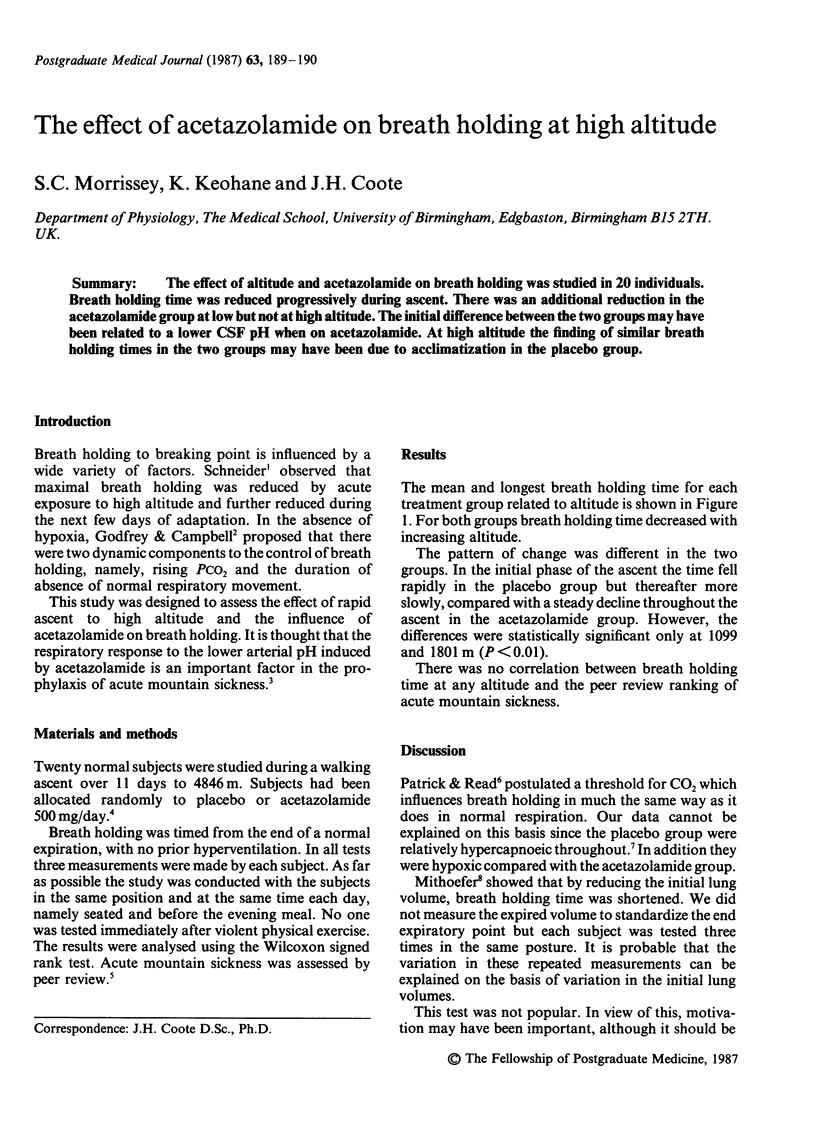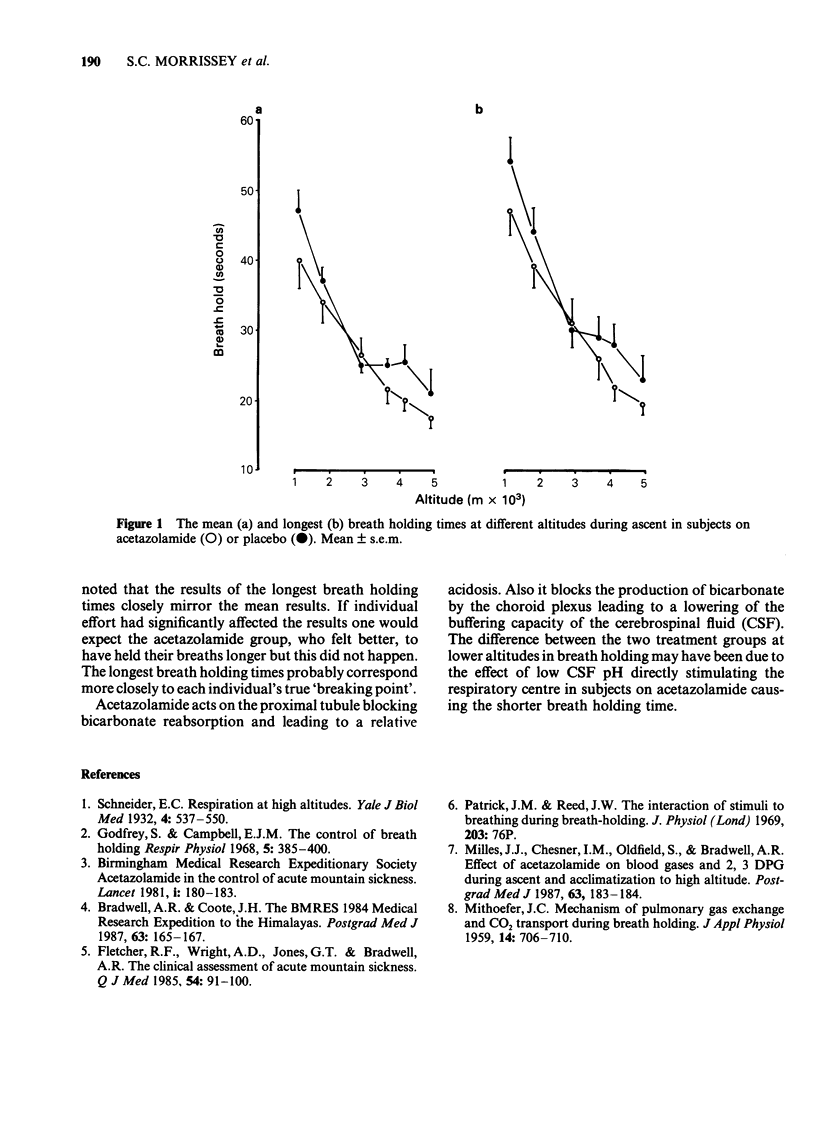Abstract
The effect of altitude and acetazolamide on breath holding was studied in 20 individuals. Breath holding time was reduced progressively during ascent. There was an additional reduction in the acetazolamide group at low but not at high altitude. The initial difference between the two groups may have been related to a lower CSF pH when on acetazolamide. At high altitude the finding of similar breath holding times in the two groups may have been due to acclimatization in the placebo group.
Full text
PDF

Selected References
These references are in PubMed. This may not be the complete list of references from this article.
- Bradwell A. R., Coote J. H. The BMRES 1984 Medical Research Expedition to the Himalayas. Postgrad Med J. 1987 Mar;63(737):165–167. doi: 10.1136/pgmj.63.737.165. [DOI] [PMC free article] [PubMed] [Google Scholar]
- Fletcher R. F., Wright A. D., Jones G. T., Bradwell A. R. The clinical assessment of acute mountain sickness. Q J Med. 1985 Jan;54(213):91–100. [PubMed] [Google Scholar]
- Godfrey S., Campbell E. J. The control of breath holding. Respir Physiol. 1968 Oct;5(3):385–400. doi: 10.1016/0034-5687(68)90030-3. [DOI] [PubMed] [Google Scholar]
- MITHOEFER J. C. Mechanism of pulmonary gas exchange and carbon dioxide transport during breath holding. J Appl Physiol. 1959 Sep;14:706–710. doi: 10.1152/jappl.1959.14.5.706. [DOI] [PubMed] [Google Scholar]
- Milles J. J., Chesner I. M., Oldfield S., Bradwell A. R. Effect of acetazolamide on blood gases and 2,3 DPG during ascent and acclimatization to high altitude. Postgrad Med J. 1987 Mar;63(737):183–184. doi: 10.1136/pgmj.63.737.183. [DOI] [PMC free article] [PubMed] [Google Scholar]


